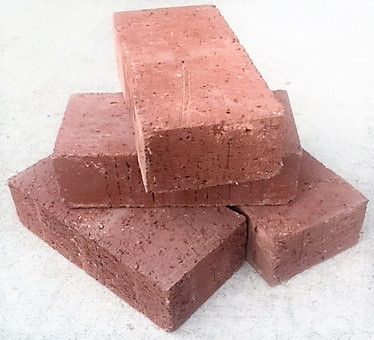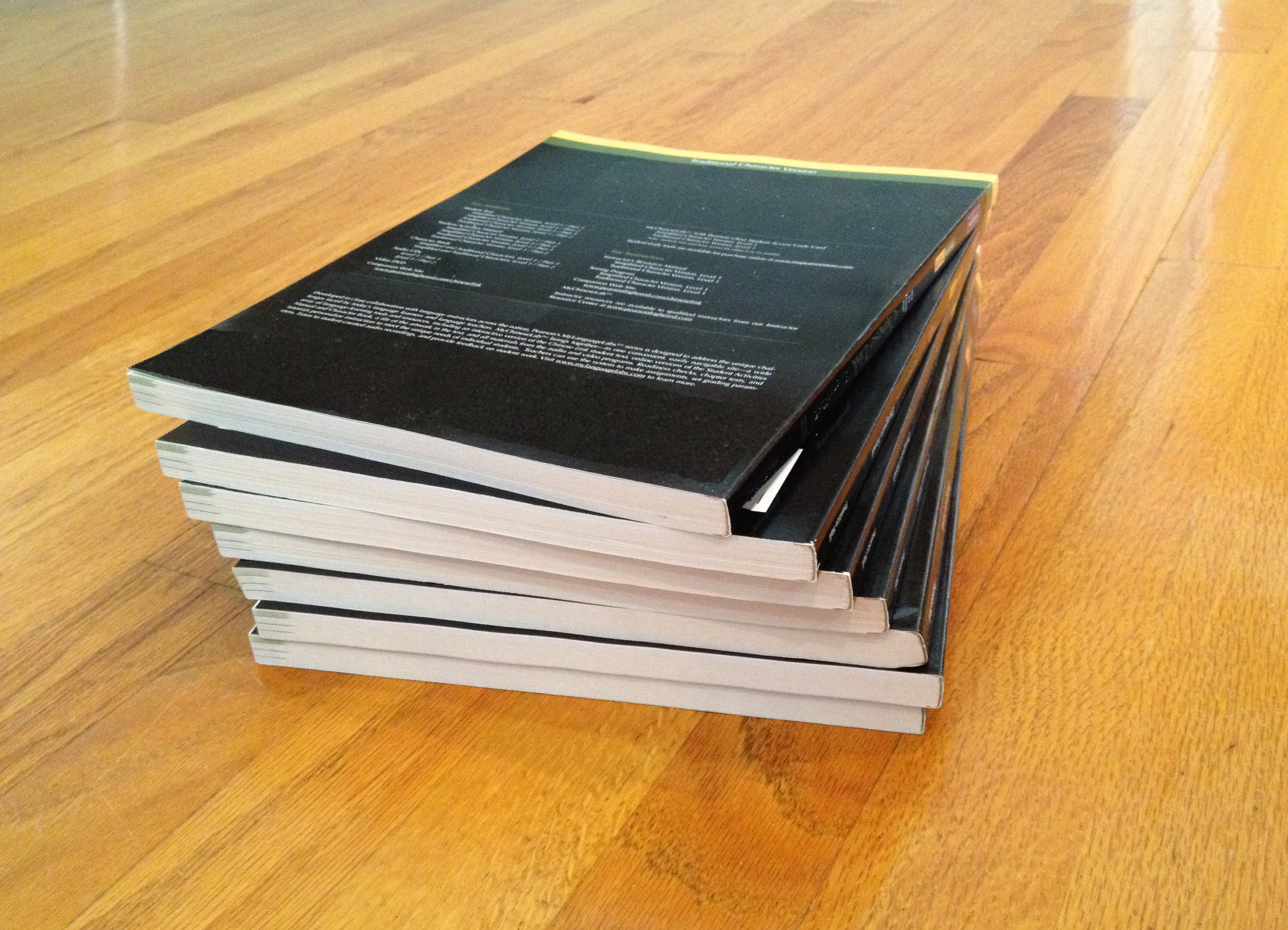Lesson 1
Size of Divisor and Size of Quotient
1.1: Number Talk: Size of Dividend and Divisor (5 minutes)
Warm-up
This number talk prompts students to notice how the values of the dividend and divisor affect the size of the quotient. To mentally evaluate the series of expressions, students think carefully about the numbers and rely on what they know about division, structure, and properties of operations.
The focus of the activity is less on the strategies for evaluating quotients and more on what happens when we divide the same number by different-sized numbers. Students should notice that dividing by a number much smaller than the dividend results in a large quotient and that dividing by a number much larger than the quotient results in a small quotient.
Launch
Reveal one problem at a time. Give students 30 seconds of quiet think time for each problem and ask them to give a signal when they have an answer and a strategy. Keep all previous problems displayed throughout the task.
Supports accessibility for: Memory; Organization
Student Facing
Find the value of each expression mentally.
\(5,\!000 \div 5\)
\(5,\!000 \div 2,\!500\)
\(5,\!000\div 10,\!000\)
\(5,\!000\div 500,\!000\)
Student Response
For access, consult one of our IM Certified Partners.
Anticipated Misconceptions
Some students may cross out the zeros without being aware of what doing so means. They may or may not reach the correct quotients. If students cross out zeros, ask the class during discussion to explain what they believe is happening mathematically when zeros are crossed out. Clarify any confusion accordingly.
Activity Synthesis
Invite a couple of students to share their answer and strategies for each problem. Record and display their explanations for all to see. Refer to MLR 2 (Collect and Display). After evaluating all four expressions, ask students:
- “What do you notice about the value of each expression as the divisor (the number we use to divide) gets larger?”
- “Why is the value of the expression getting smaller each time?”
Highlight explanations that support two ways of thinking about division:
- Dividing means breaking the dividend into a certain number of equal parts, and when there are more parts, the size of each part gets smaller.
- Dividing means breaking the dividend into parts of a particular size, and when the size of each part gets larger, the number of parts gets smaller.
To involve more students in the conversation, consider asking as the students share their ideas:
- “Who can restate ___’s reasoning in a different way?”
- “Did anyone solve the problem the same way but would explain it differently?”
- “Did anyone solve the problem in a different way?”
- “Does anyone want to add on to _____’s strategy?”
- “Do you agree or disagree? Why?”
Design Principle(s): Optimize output (for explanation)
1.2: All Stacked Up (15 minutes)
Activity
This lesson aims to give students a concrete setting for thinking about division. Students estimate how many of each given object are needed to make a stack of a given height. To do so, they use what they know about the sizes of familiar objects (boxes, bricks, notebooks, and coins) and their intuition that it takes more of a thinner object and fewer of a thicker object to reach the same height. Later, they will use this idea to think about division more generally.
We often refer to certain objects (coins, books, etc.) as having a thickness rather than a height. Clarify that "thickness" and “height” refer to the same dimension in these examples. The images of the boxes and the bricks show stacks with more items at the base. Clarify that we are concerned only with a stack with one item per layer.
As students discuss in groups, monitor for those who:
- Can explain clearly why the relationship between the height of the object being stacked and the height of a stack.
- Can explain clearly why the situation can be represented with a division expression.
Launch
Arrange students in groups of 3–4. Give students 4–5 minutes quiet think time and then time to discuss their solutions with their group.
Supports accessibility for: Visual-spatial processing
Student Facing
-
Here are several types of objects. For each type of object, estimate how many are in a stack that is 5 feet high. Be prepared to explain your reasoning.
Cardboard boxes

Bricks

Notebooks

Coins

-
A stack of books is 72 inches tall. Each book is 2 inches thick. Which expression tells us how many books are in the stack? Be prepared to explain your reasoning.
- \(72 \boldcdot 2\)
- \(72 - 2\)
- \(2 \div 72\)
- \(72 \div 2\)
- Another stack of books is 43 inches tall. Each book is \(\frac12\)-inch thick. Write an expression that represents the number of books in the stack.
Student Response
For access, consult one of our IM Certified Partners.
Anticipated Misconceptions
Some students may compare the height of objects in inches to the height of a stack in feet. Remind them to attend to units of measurement when making their estimates.
If students struggle to make estimates for the first set of questions, ask them which object we would need the most of and the least of to reach 5 feet. Then, prompt them to reason about the relative heights of those objects.
Activity Synthesis
Ask a few students to share their estimates and explanations for the first set of questions. After a student gives an estimate, poll the class to see if their estimate is less, greater, or about the same. Record for all to see the range of estimates of each object. After all four objects are discussed, ask students:
- “How did your estimates for the number of objects change as the object got thinner?” (The estimates got larger.)
- “Why might that be?” (As the thickness decreased, more objects were needed to make a height of 5 feet.)
Select previously identified students to share their responses and reasoning to the last two questions. Highlight that all situations in this activity involve division. Point out that:
- In the case of the 5-foot (60-inch) stack, the relationship can be represented as: \(60 \div \, \text{height} = \text{number of objects}\).
- The height of each object is the divisor (the number we use to divide) and the number of objects is the quotient (or result of division).
- The greater the divisor, the smaller the quotient, and vice versa.
Consider using this applet: https://ggbm.at/RJQyS6av to further illustrate the relationship between the size of the divisor and the size of the quotient.
Design Principle(s): Support sense-making; Optimize output (for explanation)
1.3: All in Order (20 minutes)
Activity
In this sorting activity, students continue to explore the relationship between dividends, divisors, and quotients.
First, they study two sets of division expressions and arrange them in order—from the largest to smallest—based on the size of the quotients. The first set of quotients has the same dividend (800). The second set has the same divisor (25).
Next, students estimate the size of quotients relative to 0 and 1. They approximate the size of divisors such that the quotients are close to 0, close to 1, or much greater than 1.
As students work, monitor how they think about placing the expressions. Select students who could explain their rationale clearly so that they could share later.
Also notice the expressions students find difficult to put in order. Expressions with fractional or decimal divisors, or expressions in which the dividends and divisors are very close to each other (e.g. \(800 \div 800.1\) and \(800 \div 799.5\)), may be particularly challenging. This is an opportunity to make use of the structure in the relationship between the three parts in a division (MP7), i.e. to see that as the divisor gets larger, even if only by a very small amount, the quotient necessarily gets smaller.
In the extension, students have the option to work in groups of 2. Instead of writing a list of expressions, partners may take turns writing expressions that have values increasingly closer to 1 without equaling 1.
Launch
If not already done in the preceding activity, review the terms “quotient” and “divisor.” Display a division equation labeled with these terms so students can refer to it as needed.
Arrange students in groups of 3–4 and pair each group with another group so that they could check each other's work. Give each group 2 sets of pre-cut slips from the blackline master. Give students 6–8 minutes to sort the two sets of expressions, a couple of minutes to review another group's work, and another 5 minutes to record their sorted lists and complete the last question.
If desired, collect the slips after students record their lists so that they could be reused.
Supports accessibility for: Conceptual processing; Organization
Design Principle(s): Optimize output (for explanation); Maximize meta-awareness
Student Facing
Your teacher will give you two sets of papers with division expressions.
-
Without computing, estimate the quotients in each set and order them from greatest to least. Be prepared to explain your reasoning.
Pause here for a class discussion.
Record the expressions in each set in order from the greatest value to the least.
- Set 1
- Set 2
-
Without computing, estimate the quotients and sort them into the following three groups. Be prepared to explain your reasoning.
\(30 \div \frac12\)
\(30 \div 0.45\)
\(9 \div 10\)
\(9 \div 10,\!000\)
\(18 \div 19\)
\(18 \div 0.18\)
\(15,\!000 \div 1,\!500,\!000\)
\(15,\!000 \div 14,\!500\)
- Close to 0
- Close to 1
- Much larger than 1
Student Response
For access, consult one of our IM Certified Partners.
Student Facing
Are you ready for more?
Write 10 expressions of the form \(12 \div ?\) in a list ordered from least to greatest. Can you list expressions that have value near 1 without equaling 1? How close can you get to the value 1?
Student Response
For access, consult one of our IM Certified Partners.
Anticipated Misconceptions
Students may try to compute the value of each expression because they are unsure how to begin otherwise. Suggest that they compare two quotients at a time, starting with those that have very different divisors. Ask, for instance, "Which is greater, \(800 \div 250\) or \(800 \div 2.5\)?" Urge them to use the patterns they saw earlier about how the size of a divisor affects the quotient.
Activity Synthesis
Ask a couple of groups to share how they sorted the two sets of expressions. Discuss expressions that students found hard to place (e.g., those involving decimal, fractional, or very large divisors), and select other students to share how they made their decisions.
Next, discuss ways to reason about the size of quotients relative to 0 and 1. The terms "dividend," "divisor," and "quotient" may not be intuitive to students. Support them by keeping a reference (a division equation labeled with these terms) displayed or referring to numerical examples. Encourage students to use these terms as they respond to the following questions, which focus on reasoning about the size of quotients relative to 1 and 0:
- “How did you decide that a quotient is close to 0?” (The divisor is much larger than the dividend.)
- “How did you decide that a quotient is close to 1?” (If the divisor is close to the dividend, then it would be closer to 1.)
- “Is there a way to tell if a quotient is less than 1 or more than 1?” (If the divisor is smaller than the dividend, then the quotient is more than 1. Otherwise, it is less than 1.)
- “Suppose a divisor is less than the dividend. How can we tell if the quotient is just a little larger than 1 or much larger than 1?” (If the dividend and divisor are very far apart in size, then the quotient is much larger than 1.)
Lesson Synthesis
Lesson Synthesis
In this lesson, we explored situations that involve division and the numbers in divisions. We noticed that the size of the dividend (the number that we are dividing) and the size of the divisor (the number we use to divide) both affect the quotient(the result of dividing). Let's recall our observations.
-
“What happens to the quotient when we divide by smaller and smaller numbers?” (The quotient gets increasingly larger.)
-
“Which would result in a smaller quotient: dividing a number by 0.5 or dividing it by 5? Why?” (5, because we would need fewer 5s than 0.5s to reach the size of the dividend.)
We also compared the size of a divisor to that of a dividend and saw how they affect the quotient. Ask students:
-
“What can we say about the quotient when the divisor is much smaller than the dividend?” (The quotient will be much greater than 1.)
-
“What about when we divide a number by another number that is much larger?” (The quotient will be close to 0.)
-
“What can we say about the quotient when the divisor and dividend are about the same size?” (The quotient will be close to 1.)
1.4: Cool-down - Result of Division (5 minutes)
Cool-Down
For access, consult one of our IM Certified Partners.
Student Lesson Summary
Student Facing
Here is a division expression: \(60 \div 4\). In this division, we call 60 the dividend and 4 the divisor. The result of the division is the quotient. In this example, the quotient is 15, because \(60 \div 4 = 15\).
We don’t always have to make calculations to have a sense of what a quotient will be. We can reason about it by looking at the size of the dividend and the divisor. Let’s look at some examples.
-
In \(100\div 11\) and in \(18 \div 2.9\) the dividend is larger than the divisor. \(100\div 11\) is very close to \(99\div 11\), which is 9. The quotient \(18 \div 2.9\) is close to \(18 \div 3\) or 6.
In general, when a larger number is divided by a smaller number, the quotient is greater than 1.
-
In \(99 \div 101\) and in \(7.5 \div 7.4\) the dividend and divisor are very close to each other. \(99 \div 101\) is very close to \(99 \div 100\), which is \(\frac{99}{100}\) or 0.99. The quotient \(7.5 \div 7.4\) is close to \(7.5 \div 7.5\), which is 1.
In general, when we divide two numbers that are nearly equal to each other, the quotient is close to 1.
-
In \(10 \div 101\) and in \(50 \div 198\) the dividend is smaller than the divisor. \(10 \div 101\) is very close to \(10 \div 100\), which is \(\frac{10}{100}\) or 0.1. The division \(50 \div 198\) is close to \(50 \div 200\), which is \(\frac 14\) or 0.25.
In general, when a smaller number is divided by a larger number, the quotient is less than 1.